10 Great Paddling Trips from Easy to Epic
Nothing says summer like drifting along a river or lake and camping near the shoreline. Here’s how to paddle some of the most beautiful waterways of Vermont and the Northeast.
With big rains this spring, the rivers around New England are still running high. Now’s the time to plan a paddling trip—by canoe, kayak or even SUP. Most of these trips can be done as single or multi-day adventures. Check ahead about campsite availability, what portages may be necessary and the river conditions. While it’s hard to limit paddling trips to just 10, all of these are accessible for new paddlers and most have nearby campsites. Here are our picks for great trips, south to north plus three epic journeys. Trips that require no portages or whitewater sections are rated easy. Don’t have a boat? Many of the outfitters mentioned can help with rentals, guided trips, shuttles or buying your own boat.
1. Somerset Reservoir (Easy)
If you want an easy paddle, calm waters and few signs of civilization, head to Somerset Reservoir near Dover for a day or overnight trip. The north end is fed by the East Branch of the Deerfield River and five miles to the south is a dam. It’s a 10-mile drive down a dirt road that veers off Route 9 to reach the put-in at the southern end, which keeps traffic low and there’s a Federal forest campsite there—which can get noisy on weekends. The land surrounding the lake is Green Mountain National Forest, which allows dispersed camping 200 feet away from the water. Near the north end is a trail to Grout Pond, which does have camping facilities at its north entrance and remote campsites at the southern end of the pond. It’s a 0.3 mile hike (and elevation gain of 70 feet) to get there. There are trails around both Grout and Somerset. Paddle to Somersets’ Streeter Island for a picnic, watch for otter and loon and bear. “One day if there’s high water I’d love to paddle all the way from Somerset down the Deerfield,” says Bruce Lessels of Zoar Outdoors, based just across the border in Charlmont, Mass. If you’re not that ambitious, don’t worry: there’s plenty at Somerset to fill a day.
2. The Battenkill (Easy)
The Battenkill may be best known as the river that runs through Orvis (of fly rod fame) country but it’s as much a paddling (and tubing) river as it is a trout stream. From Manchester, where the legendary fishing outfitter has its flagship store, you can paddle under covered bridges, through farmland and small villages all the way across the New York border. A number of outfitters can arrange for pickups and there are private riverside campsites and classic B&Bs along the way. Because it is spring-fed, the river stays clear and the water level is relatively steady for much of the summer. Perhaps the favorite stretch is the 26 miles from Arlington, Vt. to Shushan, New York. There’s a commercial campground (Camping on the Battenkill) in Arlington and Battenkill Canoe & Kayak in Cambridge, N.Y. has cabins and a B&B. Vermont River Runners and a variety of other outfitters can arrange for canoe or kayak rentals and shuttles.
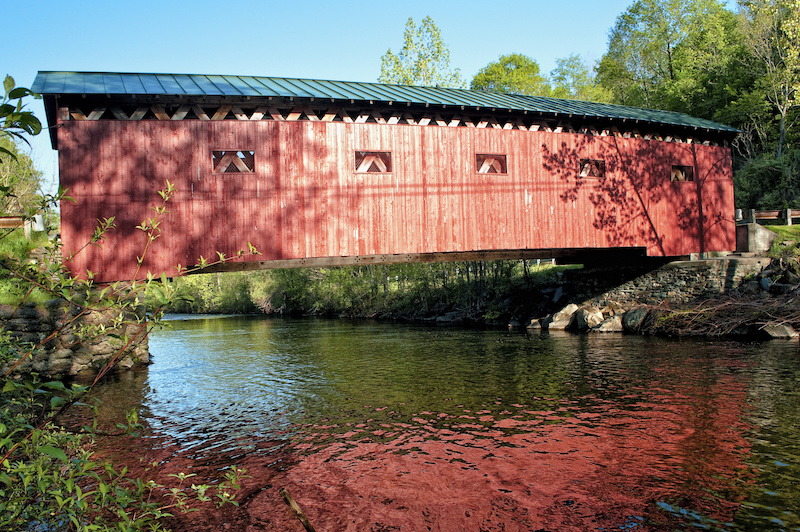
3. The White River (Moderate)
“One of my favorite Father’s Day trips is to run the White River,” says Steve Brownlee, owner of Umiak Outfitters in Stowe and Richmond. If the water is high enough and you’re adept at running what can be Class III rapids, you can start in Rochester and paddle, wade and (occasionally) portage more than 50 miles past Bethel and Sharon to where the White meets the Connecticut. “The water is generally shallow, clear and fast, which makes it fun,” says Brownlee, who notes that there are plenty of remote campsites, as well as some private ones, just off the river. In June, The White River Partnership released The White River Watershed Recreation Map and Guide with access points, paddling trips, tubing routes, fishing tips, hiking trails and more. It also has an online interactive Water Trail that features highlights on the White and its five tributaries. whiteriverpartnership.com
4. The Winooski (Easy to Difficult)
It’s possible, for the intrepid to paddle 57 miles of the Winooski River as it runs from a new put-in (to be completed this summer) in Montpelier to Lake Champlain. However, if you want to avoid low water and major portages, start with the 16-mile Middlesex to Waterbury section. Jen Roberts of Onion River Outdoors in Montpelier knows the Winooski like the back of her hand. The former trail director of the Northern Forest Canoe Trail, Roberts says this is her favorite section. “This stretch has a couple rapids (Hugo and Junkyard) that are Class II or III depending on the water level. After Junkyard Rapids, the river flows through a gorge with tall cliffs and passes islands with sandy beaches that make good picnic spots. Big ledges along the river are popular fishing and swimming spots. Approaching Waterbury, the landscape again opens up. You can take out in a couple places in Waterbury or keep paddling a slow stretch to Bolton Dam.” Friends of the Winooski River publishes a map and river guide and can offer more information about recommended trips. winooskiriver.org
5. Waterbury Reservoir (Easy)
Perhaps the easiest and most accessible paddling is on the Waterbury Reservoir. Campsites, cabins and kayak and canoe rentals are available at the state-run Little River State Park at the south end of the reservoir. Or you can rent a canoe, kayak or paddleboard from Umiak’s put in off Route 100 in Waterbury Center. While the shoreline of the 850-acre reservoir is largely undeveloped and forested, the waters can get busy with motorboats and waterskiing during the day. The north end, 6.5 miles from the southern terminus, has a speed limit of 5 mph and a no-wake zone. Come sunset, head to one of the 27 remote campsites maintained by Vermont State Parks along the shore for some solitude and a chance to listen to some of the nesting loons. vtstateparks.com
6. The Lamoille (Easy to Difficult)
In the last few years, lots of work has been done on both the Lamoille Valley Rail Trail and the Lamoille Paddler’s Trail. Upon completion, both will follow the river from Greensboro all the way to Lake Champlain. The Lamoille Valley Paddlers Trail has maps and information on its three campsites, spaced conveniently 10 to 15 miles apart as well as recommended day trips or three-to-four-night, longer paddles. As Ken Roberts of Bert’s Boats, notes, “In the spring, if the water is high and you are comfortable in white water, you could conceivably put in at Hardwick and paddle all the way to Lake Champlain—provided you are up for a number of portages.” However, there are plenty of great shorter trips. For a two-day trip, put in at Cady Falls and then paddle five miles past Ten Bends, to the Teetor Totter Campsite. From there, it’s 14-miles downstream to Jeffersonville with visits (and portages) at Dog Head Falls and Sloping Falls. An easy day trip is a six-mile paddle downstream that ends at Boyden Valley Winery. Bert will rent you a canoe or kayak and drop you off six miles upstream of the winery for a self-guided paddle for about $80. Umiak Outfitters of Stowe offers similar trips for $90. lamoilleriverpaddlerstrail.org.
7. Green River Reservoir (Easy)
The most difficult thing about paddling the Green River Reservoir in Greensboro is getting a
campsite. With 27 remote campsites, some on islands and many only a mile from the put in, a 5 mph speed limit, and a largely forested shoreline, the reservoir is one of the gems of the Vermont state park system. It’s also become extremely popular. With tight parking and only a few camping spots, the state limits use. But if you can reserve a campsite (call ahead), get there early and paddle north, you’ll be rewarded with a quiet lake that’s a perfect weekend getaway. vtstateparks.com
8. The Missisquoi (Easy to Moderate)
Part of the Vermont segment of the Northern Forest Canoe Trail, the Missisquoi ambles south from Quebec through some of Vermont’s most scenic farmland before it spills out at Lake Champlain’s Missisquoi Bay. With big views of the Green Mountains, it’s no surprise that this section is part of our state’s 46.1 miles of designated National Wild and Scenic Rivers. For a short (one to two-day) trip, put in at Davis Park in Richford and drift west 22 miles to take out at Enosburg Falls. At Samsonville Dam you can choose to portage (though it is runnable). A bonus of this trip (besides the scenery) is that you can camp at Doe campsite on a bluff above the river. Also, the rail trail runs alongside the river, making for a pleasant bike back to your car (or plan to do the Missisquoi Pedal and Paddle Race next June). There are also two other maintained campsites if you want to make it a leisurely weekend. “We did a trip in June and saw bear, a fisher, otter, eagles and deer—all from the river,” says Lindsey Wight, coordinator for the Upper Missisquoi and Trout Rivers Wild and Scenic Committee, which celebrated its fifth anniversary with a paddle down all 46.1 miles this past June. For trips and rentals, Montgomery Adventures can help. vtwsr.org
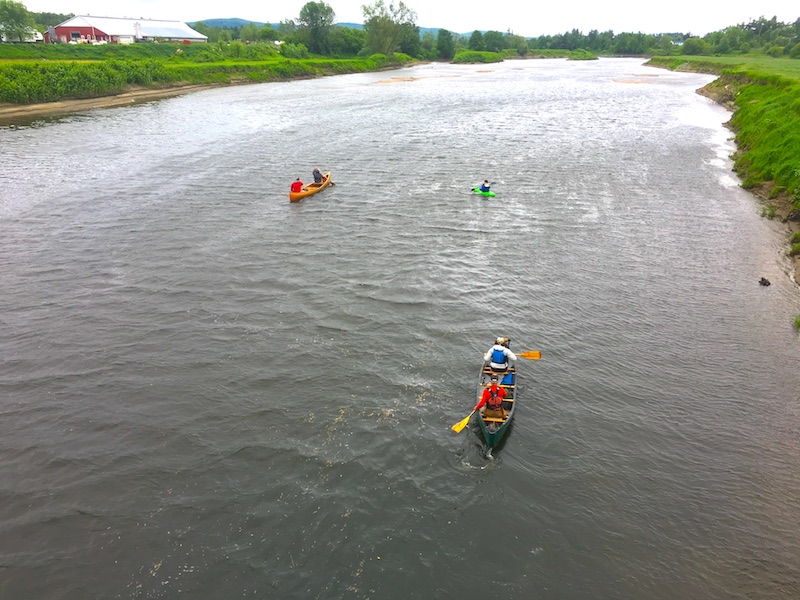
9. Upper Connecticut (Easy)
“One of my favorite trips is the Connecticut River,” says Bruce Lessels of Zoar Outdoors, which puts together trips all over New England. The 69-mile stretch of the Connecticut River that runs from West Stewartstown near Quebec to Gilman, Vt. features some of the fastest water on the Connecticut River, though the bulk of the paddling is meandering and calm. Scenery ranges from vast timberland to old farms, with only one long stretch of rapids, just after the Columbia covered bridge. Make a side-trip to hike 3,166-foot-high Monadnock Mountain on the way. For directions, maps, camping and paddling information, contact the Connecticut River Paddlers’ Trail. The full river provides 400 miles of paddling with more than 50 campsites. connecticutriverpaddlerstrail.org
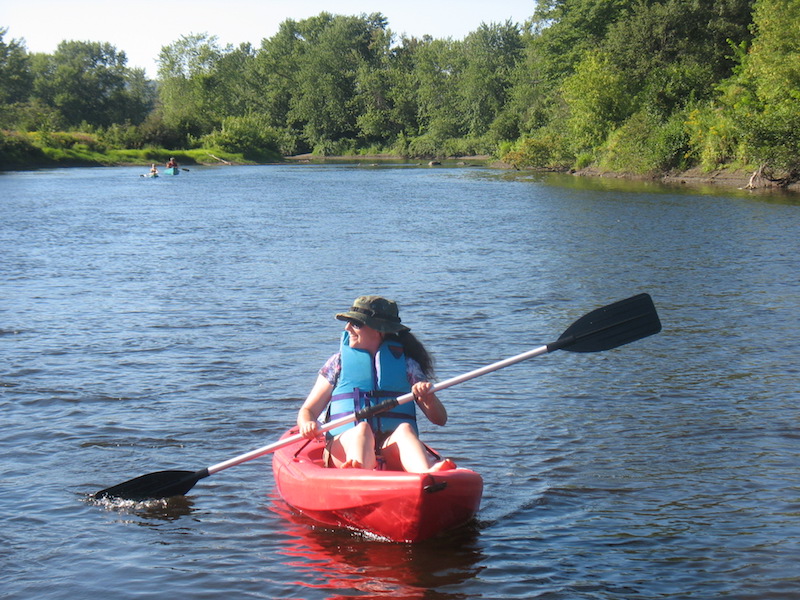
10. The Saranac Lakes (Easy to Moderate)
While there are literally hundreds of canoe routes in the Adirondacks, a perfect introduction to paddling here is the Saranac Lakes. Upper, Middle and Lower Saranac Lakes are a chain of three glacially carved lakes at the edge of the High Peaks Wilderness Area. Together, they comprise a popular 17-mile chain of paddling with only one portage, called the Bartlett Carry. The half-mile canoe carry separates Upper from Middle Saranac Lake and is a great introductory portage, with part of it on a road. For a shorter, easier trip, the Middle and Lower Saranac Lakes are connected by a hand-operated lock on the meandering Saranac River. There are more than 18 island campsites and paddling that ranges from open water to tight creeks, coves and meandering rivers. Register for one of the 87 campsites with the Saranac Lake Islands Public Campground (open between May 15 and October 15). Sites are $27 per night for out-of-state campers. You can see a map and reserve ahead at dec.ny.gov/outdoor/24496.html. The Adirondack Paddler’s Guidebook is waterproof and offers great trip information. For canoe and paddle rentals, shuttle services, guided trips and information, call Raquette River Outfitters in Tupper Lake or St. Regis Canoe Outfitters in Saranac Lake.
Featured Photo Caption: A lazy day on the Lamoille where you can drift through the heart of the Green Mountains. Photo courtesy Bert’s Boats
Got a few weeks or looking for a true journey? Check out these 3 Epic Paddling Trails across New England.

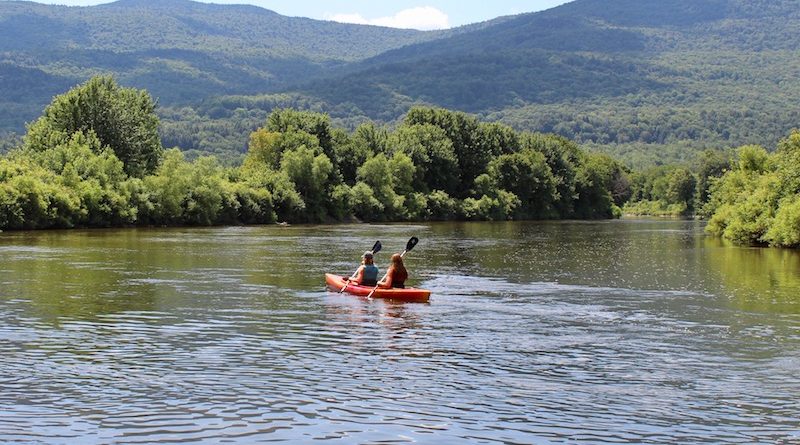
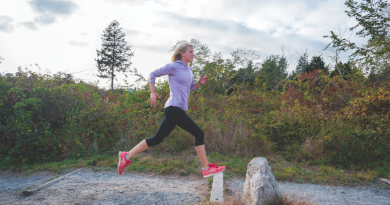
Great resource! Sorry, I only see 9 🙁 Your list is so good that I was looking to see what #10 was going to be. Have done 3 on your list in some form or another starting in 1974 on the Lamoille. Thanks.
Thanks so much Paul! We left off #10 and just added it in. THe Saranac Lakes!